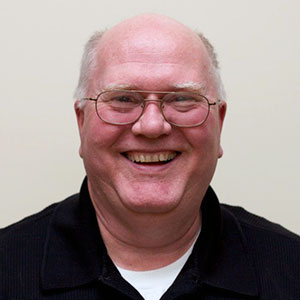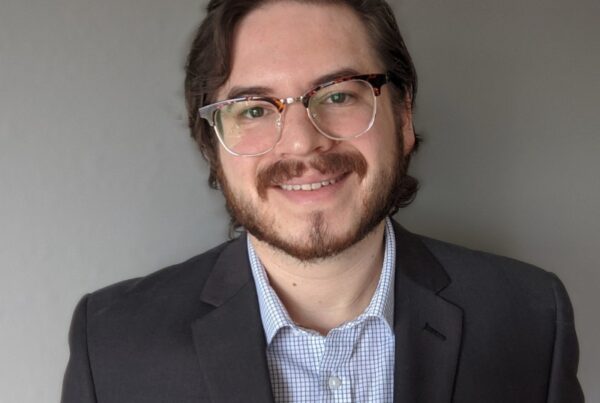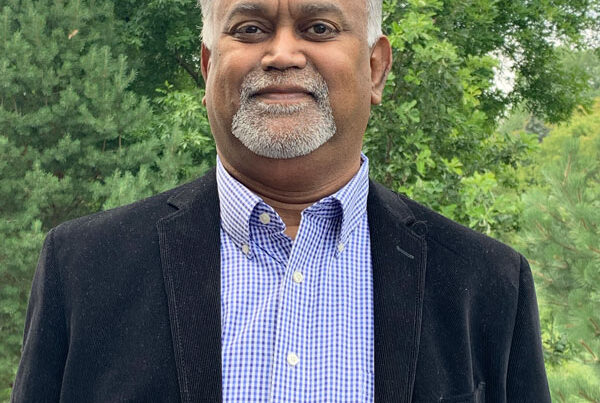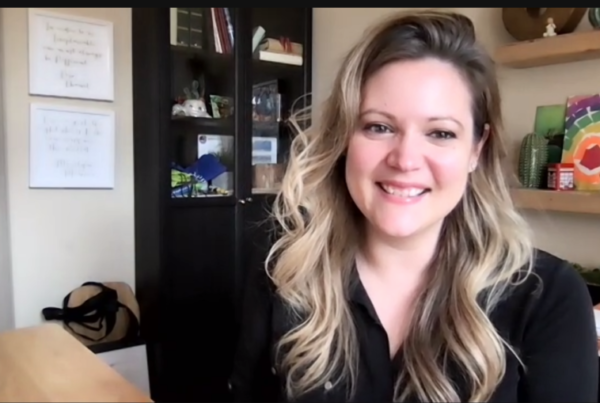Delivering value is at the heart of our technology solutions, and we couldn’t do that without the tremendous technical expertise brought to the table by our team of consultants, developers, and engineers.
In this interview, we chat with Tim Jackelen, a seasoned IT project manager, about his recent work helping identification, authentication, and digital security firm Entrust integrate ERP systems from two of their latest acquisitions.
Brock Ray: Hey Tim, thanks for joining me today. Can you tell us a little about your background. I understand you’ve got a pretty storied career.
 Tim Jackelen: Sure. I was Vice President of IT at SciMed Life Systems and also Director of Infrastructure for Pioneer, which was a DuPont company. Then, for a good period of time, I was a Global PMO Manager inside of DuPont.
Tim Jackelen: Sure. I was Vice President of IT at SciMed Life Systems and also Director of Infrastructure for Pioneer, which was a DuPont company. Then, for a good period of time, I was a Global PMO Manager inside of DuPont.
I also served in a Director of Infrastructure role within Axalta Coating Systems, as they split off from DuPont. This was a divestiture, taking Axalta — which was Dupont’s paint business — and separating it out for Carlyle Group to purchase. That was a substantial, 18-month project, and we got it done in 13. So that got Axalta to their public offering six months earlier than they had planned, which is always a benefit.
BR: I want to learn a little bit more about the kind of work that you’re doing with Entrust as a Traust consultant.
TJ: For the last year and a half I’ve been working with Entrust on behalf of Traust, and what they’ve been doing is integrating two acquisitions. The first was a hardware security business called nCypher Security, and the most recent one was a company called HyTrust, which provides multi-cloud data encryption and key management.
BR: So tell me about the work that you’ve been doing there. You’re working as a technical project manager, right?
TJ: Yeah. So, they come to us with the scope of the project and then we identify the risks, issue management, and keeping everybody on track with the tasks needed to bring the new company into the Entrust fold. So that’s the biggest piece of the puzzle.
On a day-to-day basis, it means leading meetings, setting those up, making sure people are prepared for each milestone, and addressing issues as we go. We also had a couple of big product workshops this last project, in order to help create a cohesive product roadmap.
From there, it’s a lot of testing. There are a lot of different phases of testing to get to the place of going live and being in production. Finally, we’ve been providing support post go-live.
BR: What are some of the different systems that you were working to help get integrated?
TJ: The two primary ones were Oracle EBS and Salesforce, along with accounting systems like Vertex and some of the ancillary pieces that go with that. The nCipher acquisition also included integration with their manufacturing system called Precision, their trade compliance application. That piece was about making sure that they weren’t accidentally selling to organizations that the government would deny them the right to sell to.
Interestingly, we were also using Salesforce to manage the project. So there’s a little bit of an overlap there. A big part of Entrust’s business is selling software, so the whole managing of the software and the support of the system with the customers is also a component of this type of project.
BR: What have you found to be some of the major challenges with doing this M&A work as a project manager. When two companies are coming together and you have to integrate their disparate systems.
TJ: Yeah, I think it’s always the culture change and change management. Both companies may have had Salesforce, but they don’t necessarily use it the same way, right? And then, I think, in some cases it’s sort of the big company / little company challenge of: you’ve gone through and made these decisions as a large corporation, and when you acquire a company who’s 10% your size, there’s a whole rift, in a way, of how things need to be done.
Some of the controls and processes that are needed to scale aren’t there in a smaller company — and there isn’t a reason for them in that smaller company. So that becomes a challenge to overcome, to get people to realize that, yeah, that separation of duties stuff is kind of important. And, of course, as a corporation, that’s not a big issue, but as the acquired company, you have to kind of get people to come around on some of those issues. At the same time, you want to drive it in a fashion that’s not overbearing but makes it clear that this isn’t really going to change, either.
BR: So, in a small company, things tend to be more fluid, more agile, right? Work processes and controls. In bringing those folks into the new, larger company, change management matters. Tell me a little bit more about some of the work you’ve done as a project manager to integrate Hytrust and nCipher into Entrust.
TJ: I think, in a lot of cases, it’s finding a concern or an issue about how something’s happening or processed, and then turning that issue into a couple of sessions that get people to the right end-game. You know, too many times, people take positions instead of discussing how they do it currently and then use that to help guide them to the next step. So, you know, “I won’t do that” is often the beginning point, and you have to get from there to some more flexibility on both sides. So that’s part of it.
BR: So tell me a little bit more about you know, what do you enjoy most about this kind of technical project manager work?
TJ: So, as often happens, people aren’t always equipped to deal with the complexity or volume — or whatever it happens to be — in dealing with this stuff. And since I’ve been around the block a few times, I’m really able to help people get through some of that. Whether it’s just anxiety from not having experienced it before or really truly being overwhelmed, you have to give them a way to still be successful and keep moving forward. That’s been a big part of where my attention and time goes. I’ve also been able to be an ally to the leadership folks, sitting with them as they’re deciding how to do things or what their next steps need to be in order to deal with a problem.
BR: And what have been, for you, the biggest challenges that you face in this kind of work?
TJ: Yeah, I kind of think it’s all about realizing it doesn’t matter how I would do it, right? I’ve been in charge for 20 years and am used to just making stuff happen. And there’s an aspect that stays that way, but the scale of that part is less. Now, I’m focused on being the “good waiter” as opposed to being the person who makes all the decisions. That was a big adjustment for me when I started this work.
BR: Yeah, sure. You’re getting other people to do things the way that makes the most sense for them, but not necessarily, like you said, the way that you would do it if you were back in the driver’s seat.
TJ: Yeah, exactly. And for that reason, it’s not what I think is best. It’s what’s best for them.
BR: What counts as success at the end of your day? What’s the metric that you use to know that you’ve done a good job?
TJ: My metric is: are they doing better than they thought they’d be able to? The bar is set at where they think they can go and what they think they can accomplish, and I’m focused on getting them to do more than that or better than that. You know, there’s different ways to measure those things, but that’s really what I think it’s about for the most part. Of course, we have to make that sustainable. Once you set a new baseline, you need to be able to keep that up and not just lose it.
So we put a lot of processes in place to help manage the project. And in doing that, I think those processes will all be there for the next five years at least.
BR: Tell me a little bit more about those processes. What types of things help get clients to be in a position where they’re better off than they thought they would be?
TJ: You know, I have the PMP (Project Management Professional) certification, which means I know what the rules are for how to handle projects. But for me, you have to apply those rules to the organization in a way that creates a right-sized, right-fitting set of processes for that organization. There are a whole set of PMP rules that start to break down when you’re not big enough or you’re in a fast-moving mode and not always able to dot every “I” and cross every “T” the way PMP proscribes.
BR: Well, so tell me about getting into IT. What drew you into this line of work? And, as we noted earlier, you’ve had a noteworthy career already. How have you grown and changed over that time?
TJ: I started out with no real intention to be in IT. I studied business management and German and so that was where my goals were. But starting out, companies offered up programming roles, because that was really what they needed. And so early in my career, I talked to my brother who had already been in IT for 10 years in the Air Force. I realized it really made sense for me to follow in his footsteps, because we were basically similar people, just at different ages.
From there, once I got to be in roles responsible for analysis and design and leading people, those were the things where the career really took off for me. Leading groups of a hundred to two hundred people is what really became the center of my life for most of my career. And now, as a consultant, it may only be leading five people at a time, but it’s still the same fun stuff.
BR: Leading such large groups must be interesting. In managing people, I know a lot of the times it’s them coming into your office and you spend time just helping them to manage their workload and what they’re trying to accomplish. What happens when you do get to, like you said, a hundred or two hundred people? They can’t each have office time with you.
TJ: Yeah. It becomes sort of making sure they know they’re empowered to do the right thing. And making sure that you’re checking in with them enough so that the contact allows for, “This is broken, I need help.” You know, people have to trust, really, that you’re going to help them get through whatever is broken. And that’s where the difference lies, to be successful with those numbers. Everybody in each location has to realize that, “yeah, he’ll be there for you to help you fix it.”
BR: When you’re not doing work for Traust clients, what sort of things do you get up to?
TJ: Yeah, so my wife and I have four grandchildren, so that’s a big part of life, of course. Two of them — twins — are just eight weeks old, so they’re really, really cute little ones.
My son has also gotten involved in astronomy with his telescope and camera. So he’s got neural net stuff going on, trying to resolve these amazing pictures. We’ve shared that interest together, and that’s been a lot of fun. I think, just in general, I love to constantly be learning. It’s a lot of fun to keep learning and paying attention to what’s happening today. I’m learning all about this James Webb Telescope, and everything NASA is doing lately has really been exciting.
The other thing I like to do is watch movies. I’ve got 600 at home on DVDs, from back when that was the way to collect them. I also took the IMDB database, and I keep a running list of the best movies ever made. I try to actually own them in some electronic form now. I also like to watch them, as opposed to just collecting ‘em. I’ll even continue to watch a movie in German every now and then, trying not to use the English captions.
BR: Fantastic! Tim, thank you so very much for taking time out of your busy day to speak with us. This has been really great.
TJ: All righty. I’ll get back to it then. Thanks.
We’re thrilled to have talented folks like Tim on the Traust team. Got a daunting IT project or ERP integration initiative on your agenda this year? Traust can help! Drop us a line.





